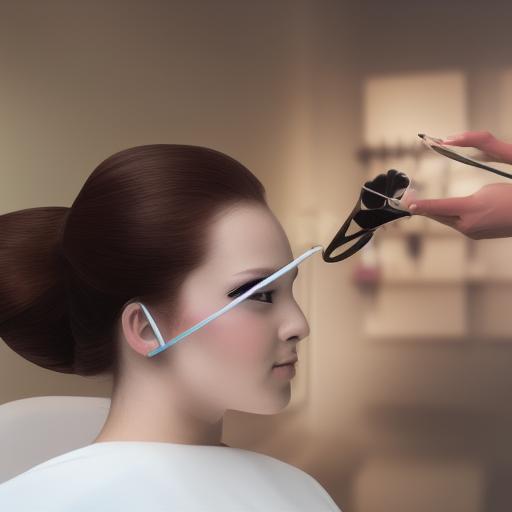
Dreaming of owning your own beauty salon? The allure of creativity, client connection, and building your own empire is undeniable. But before you start envisioning glamorous appointments and overflowing appointment books, you need a solid understanding of the financial realities. This comprehensive guide will break down the costs associated with starting a beauty salon, helping you create a realistic budget and plan for success.
I. Pre-Opening Costs: Laying the Foundation
Before you even open your doors, a significant investment is required to establish your business foundation. This phase focuses on the crucial legal, administrative, and preparatory tasks.
A. Business Planning & Legal Fees
Business Plan Development: A well-structured business plan is crucial for securing funding and guiding your business decisions. This includes market research, competitive analysis, financial projections, and your marketing strategy. Expect to spend anywhere from $500 to $2,000 on professional business plan development or invest your time in creating a comprehensive plan yourself using free online templates.
Legal Structure & Registration: Choosing your business structure (sole proprietorship, LLC, partnership, etc.) impacts your liability and tax obligations. Legal fees for registering your business, obtaining necessary licenses and permits (business license, professional licenses for your staff, etc.) can range from $500 to $2,000, varying by location and legal complexity.
Insurance: Protecting your business from potential liabilities is paramount. General liability insurance, professional liability insurance (errors and omissions), and workers’ compensation insurance are essential. Annual premiums can range from $1,000 to $5,000 depending on your coverage and location.
B. Location & Leasehold Improvements
Location Selection: Choosing the right location is crucial for attracting clients. Factors to consider include foot traffic, visibility, accessibility, parking, and proximity to your target market. Rent costs vary dramatically depending on location and size. Expect to spend anywhere from $1,000 to $10,000+ per month on rent, with a security deposit usually equivalent to one to three months’ rent.
Leasehold Improvements: Adapting the space to your salon’s needs will require significant investment. This includes renovations, painting, flooring, electrical work, plumbing, and potentially HVAC upgrades. Budget anywhere from $5,000 to $50,000+, depending on the condition of the space and the extent of renovations.
C. Initial Equipment & Supplies
Salon Furniture & Fixtures: This is a significant investment. You’ll need styling chairs, shampoo bowls, reception desks, waiting area seating, storage units, and potentially specialized equipment depending on your services (e.g., tanning beds, nail stations). Expect to spend $5,000 to $20,000+.
Professional Equipment: This includes hair dryers, curling irons, straighteners, clippers, shears, waxing equipment, manicure and pedicure tools, and other specialized equipment relevant to your services. Costs range from $2,000 to $10,000+.
Initial Supplies: Stock up on shampoo, conditioner, hair color, styling products, nail polish, waxing supplies, and other consumables. Your initial supply purchase might cost $1,000 to $5,000, depending on the range of services you offer.
II. Ongoing Operating Costs: Maintaining the Momentum
Once your salon is open, ongoing expenses are critical to consider. These costs contribute to the day-to-day running of your business.
A. Rent & Utilities
Rent: As mentioned previously, rent is a major ongoing cost. Budget for consistent monthly rent payments.
Utilities: Electricity, water, gas, internet, and phone services are essential. Costs fluctuate based on usage and location. Allocate a reasonable monthly budget.
B. Staff Costs
Salaries & Wages: Depending on your staffing structure (independent contractors, employees), you’ll need to budget for salaries, wages, and potentially benefits (health insurance, paid time off).
Payroll Taxes: Employers are responsible for various payroll taxes (federal and state). Factor in these costs when budgeting for staff compensation.
Employee Training & Development: Investing in ongoing training for your staff ensures they maintain skills and learn new techniques. Budget for training courses, workshops, or mentorship programs.
C. Marketing & Advertising
Marketing Strategy: Develop a comprehensive marketing plan encompassing online and offline strategies. This might include social media marketing, local advertising, email marketing, and public relations.
Advertising Costs: Budget for advertising expenses across different platforms. Costs vary widely depending on your chosen methods.
D. Supplies & Consumables
Product Replenishment: Continuously replenish your stock of hair products, nail supplies, and other consumables.
Cleaning Supplies: Maintain a clean and hygienic salon environment. Budget for cleaning products and disinfectants.
E. Software & Technology
Salon Management Software: Invest in software to manage appointments, client records, inventory, and financial transactions.
Point of Sale (POS) System: A POS system streamlines payments and tracks sales efficiently.
III. Calculating Your Total Startup Costs
Estimating your total startup costs requires adding up all the expenses outlined above. While providing an exact figure is impossible without specific details of your salon, let’s look at a range based on different scales:
- Small-scale salon (one stylist, limited services): $20,000 – $50,000
- Mid-sized salon (multiple stylists, diverse services): $50,000 – $150,000
- Large-scale salon (multiple stations, specialized services): $150,000+
Remember that this is just an estimate. You should create a detailed budget that accurately reflects your specific needs and circumstances.
IV. Funding Your Salon: Securing the Necessary Capital
Securing funding for your salon can come from various sources:
- Personal Savings: This is often the primary source for many entrepreneurs.
- Small Business Loans: Banks and credit unions offer loans specifically for small businesses.
- Investors: Seeking investment from angel investors or venture capitalists is an option for larger-scale ventures.
- Crowdfunding: Platforms like Kickstarter and Indiegogo allow you to raise funds from a large number of people.
- Grants: Explore grants available for small businesses or businesses owned by minorities or women.
V. Learn Business: Your Partner in Success
Starting a business can be daunting. Navigating the complexities of finances, marketing, and operations requires guidance and support. Learn Business (https://learn-business.org) offers valuable resources to help entrepreneurs like you succeed. They provide comprehensive guides, templates, and tools specifically tailored to various business needs, including detailed financial planning templates for beauty salons, marketing strategies optimized for the beauty industry, and legal compliance guides to ensure you are operating within the law. Their resources can help simplify the process of starting and managing your beauty salon, minimizing stress and maximizing your chances of success. They offer templates to help you craft a robust business plan, manage your finances effectively, and create a successful marketing strategy. Utilizing their resources can save you valuable time and money in the long run.
VI. Marketing Your Beauty Salon: Attracting Your Ideal Client
Once you have your salon established, marketing is crucial for attracting and retaining clients. Consider these strategies:
- Social Media Marketing: Create engaging content on platforms like Instagram, Facebook, and TikTok to showcase your services and build brand awareness.
- Local SEO: Optimize your online presence to rank higher in local search results.
- Loyalty Programs: Reward repeat customers with discounts and special offers.
- Partnerships: Collaborate with complementary businesses to cross-promote your services.
- Influencer Marketing: Partner with beauty influencers to reach a wider audience.
- Email Marketing: Build an email list and send out newsletters with promotions and updates.
VII. Managing Your Salon’s Finances: Maintaining Profitability
Effective financial management is crucial for long-term success. Key aspects include:
- Accurate Bookkeeping: Track all income and expenses meticulously.
- Inventory Management: Efficiently manage your supplies to minimize waste and maximize profitability.
- Pricing Strategies: Develop a pricing structure that balances profitability and market competitiveness.
- Cash Flow Management: Monitor your cash flow closely to ensure you have enough funds to cover expenses.
VIII. Conclusion: Your Journey to Salon Success
Starting a beauty salon is a challenging but rewarding endeavor. By carefully planning your budget, securing adequate funding, and utilizing available resources like those provided by Learn Business, you can significantly increase your chances of success. Remember to focus on providing exceptional customer service, building a strong brand, and constantly adapting to the ever-evolving beauty industry. Your hard work, dedication, and strategic planning will pave the way for a thriving and fulfilling business. Good luck!


Leave a Reply